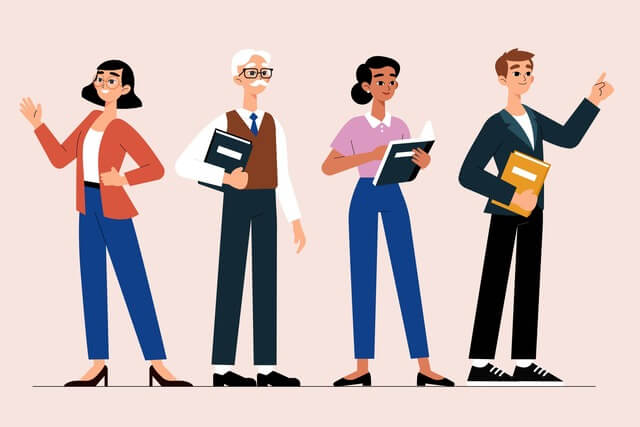There are two important processes involved in understanding spoken and written discourse.
Those processes are:
- Top-Down Processing
- Bottom-Up Processing
Both processes can change the way we teach listening and reading.
Let’s define both in general terms before we approach how they affect language skills specifically.
Table of Contents
- What’s Top-Down Processing?
- What’s Bottom-up Processing?
- Top Down and Bottom up Processing in Reading
- Top Down Processing
- Bottom Up Processing
- Top Down and Bottom up Processing in Listening
- Top Down Processing in Listening
- Top Down Processing Examples
- Bottom up Processing in Listening
- Bottom up Processing Examples
What’s Top-Down Processing?
Top-down processing refers to the use of background knowledge in understanding the meaning of a message.
The background knowledge required for top-down processing may be
- Previous knowledge about the topic of discourse.
- Situational knowledge.
- Contextual knowledge.
- Knowledge in the form of “schemata.
What’s Bottom-up Processing?
Bottom-up processing refers to using the incoming input as the basis for understanding the message.
Comprehension begins with the received data that is analyzed as successive levels of organization – sounds, words clauses, sentences, texts until meaning is derived. Comprehension is viewed as a process of decoding.
Top Down and Bottom up Processing in Reading
Now we are going to examine how top down and bottom up processing is used in reading.
Top Down Processing
This processing in language learning happens when some uses background information to predict what they are about to read
They develop expectations about what they will read, and confirm or reject these as they read
An example of this processing is asking learners to read the title of a piece of writing and asking what the article might be about.
Bottom Up Processing
This processing happens when someone tries to understand a piece of writing by looking at individual meanings or grammatical characteristics of the most basic units of the text,
An example of this type of processing is asking learners to read a piece of writing to focus more on form rather than meaning.
Top Down and Bottom up Processing in Listening
Now we are going to learn how top down and bottom up processing is used when teaching listening
Top Down Processing in Listening
Exercises that require top-down processing develop the learner’s ability to do
the following:
- Use key words to construct the schema of a discourse
- Infer the setting for a text
- Infer the role of the participants and their goals
- Infer causes or effects
- Infer unstated details of a situation
- Anticipate questions related to the topic or situation
In a class setting, this processing is reinforced every time teachers:
- Ask learners to predict what they are going to listen based on the title of the listening passage.
- Show pictures about the topic learners are about to listen so they can use their background knowledge to predict what they are going to listen.
Top Down Processing Examples
An example of this processing happens when a friend tells you how great her trip to the beach was and you predict what she is about to say using your background knowledge.
You might ask questions such as:
- Was it sunny?
- Were there many people
- Did you play any games on the sand?
Another example is when you turn on the TV and it is said on the news that there was an earthquake in Haiti last night and immediate you start asking yourself questions such as:
- How much damage did the earthquake do?
- What was the magnitude of the earthquake?
- Did people die
As you can see, people can predict or make these question because they have a previous knowledge about what going to the beach implies and the catastrophe that earthquakes cause.
Bottom up Processing in Listening
Bottom-up processing refers to using the incoming input as the basis for understanding the message.
Comprehension begins with the received data that is analyzed as successive levels of organization – sounds, words, clauses, sentences, texts until meaning is derived.
Exercises that develop bottom-up processing help the learner to do such things as the following:
- Retain input while it is being processed
- Recognize word and clause divisions
- Recognize key words
- Recognize key transitions in a discourse
- Recognize grammatical relationships between key elements in sentences
- Use stress and intonation to identify word and sentence functions
Bottom up Processing Examples
An example to illustrate this is when you work as a reception in a hotel and a guest wants to make reservation and you listen attentively to every piece of information the future guest provides such as:
- Name
- Credit Card Number
- Phone Number
- Day of arrival

